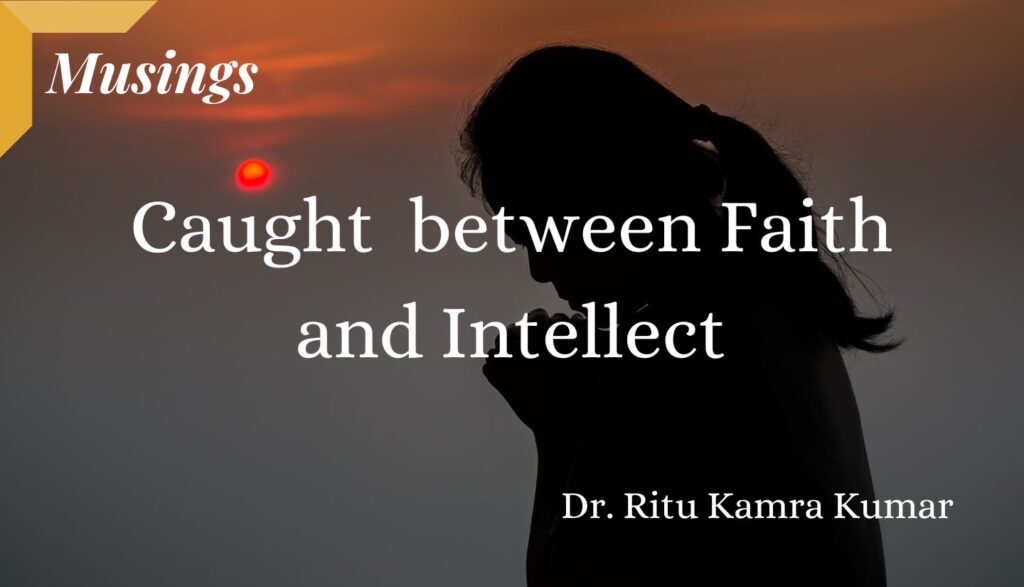
Faith is like electricity, you can’t see it but can feel the light. I realized this while reading Raja Rao’s ‘Khantapura’. Each and every deity of the Hindu mythology has miraculous stories that leave one wonder struck. Clapping, swaying, inhaling the serenity of spiritual fervour, the people of ‘Kanthapura’ sang ‘Goddess Kanchma, benign and bounteous, Mother of Earth, blood of life, harvest queen.” Reading it made me think how an agnostic and believer is present in each one of us, yet the war between faith and intellect has been there since time immemorial. We vacillate between mind numbing conviction of faith and the nerve-wrecking realization that it may turn out to be a myth. The tussle continues in the present when we have Paleolithic emotions, medieval institutions and Godlike technology. The battle between head and heart is perennial. Alexander Pope pertinently writes on predicament of Man:
“Placed on this Isthmus of a middle state
With too much knowledge for the sceptic side
With too much weakness for the stoicism pride
He hangs between: In doubt to act, or rest”
Intellect overweighs faith, and its overbearing grasp forces us to conclude that the world is being run by a superpower randomly without any meaning or purpose. Man is the supreme creation of God. Thinking comes to him naturally just as leaves on trees. So before arriving at a decision, he logically weighs pros and cons of everything. This logic makes him conscious of his decisions and, to quote Shakespeare’s words, he is torn between “to be or not to be” On the other hand, his heart pulls him to trust instinct. This is just a reflection of our thoughts. Whatever our thought process may be, the opposite raises its head to reason and rebelliously asks, “What is the truth? Is knowing the truth, meandering through labyrinths invisible to open eyes worth the journey to inner self”
In need of peaceful stillness, my steps moved towards a nearby temple to focus on deep seated apprehensions growing in my mind. The radiant and resplendent sculptures of deities, the blowing of the conch, the scent of camphor, the sound of soulful hymns, the waves of positivity transmitting in the air, and the feeling of oneness with devotes suddenly became an occasion for a breathless encounter with hope and happiness.
Sitting among strangers immersed in the mystic renditions of the devotional songs, I felt light and let go off my doubts. I found myself actively singing and thanking God for his countless blessings. With emotions trickling down my face, I shared the divine presence with devotees sitting there, and realized that faith is never identical with piety.
Myth and faith are so intricately woven that separating them is an arduous task. Faith becomes stronger when it is based on solid mythology. Once mythology and faith are associated, one rises to another level of existence and veneration, and resentment and regrets fall off.
Washington Carver, once an African slave, became a world-famous scientist and discovered 300 products that could be made from the humble peanut. Asked how he had done it, he replied that God has given us the brain, we have to use it to find our answers. This illustrates the relationship between, myth, faith and intellect. I feel faith is an inspiration for tapping into spiritual laws. I ask myself who is that someone who steers me through the darkest road of life, and accomplishes my goals? Is it my reason? My conscience? Some selfless supreme power?
I came out of the temple realizing that spiritual spaces are not confirmed to a prayer room, they are everywhere. I looked up and saw the divine bliss in the blue sky. I bowed my head with tears of joy as I had a glimpse of the divine delight, which affirmed my faith.
Ritu Kamra Kumar
